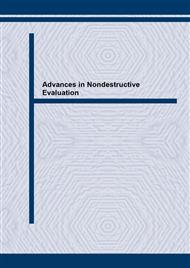[1]
R. P. Newman and T. R. Gurney, British Welding Journal, (1959), p.569.
Google Scholar
[2]
K. Takahashi and A. Ito, Japanese J. of Welding, Vol. 40, No. 8 (1971), p.723.
Google Scholar
[3]
S. Yoshida, M. Inagaki, M. Kanao, E. Sasaki, M. Nihei and M. Kamakura, Japanese J. of Welding, Vol. 47, No. 9 (1978), p.5.
Google Scholar
[4]
W. Fricke and A. Muller-Schmerl, Journal of Offshore Mechanics and Arctic Engineering, Vol. 120 (1998), p.97.
Google Scholar
[5]
ASTM E 466, Standard test method for conducting constant amplitude axial fatigue of metallic materials (2002).
Google Scholar
[6]
ASTM E8-01, Standard test method for tension testing of metallic material (2001).
Google Scholar
[7]
R. I. Stephens, A. Fatemi, R. R. Stephens and H. O. Fuchs, Metal fatigue in engineering (JOHN WILEY & SONS, 2nd Ed., 2001).
Google Scholar


